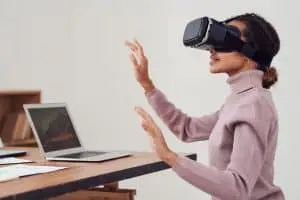Introduction
Visual merchandise is a subtle craft, which connects the world of sales, art and emotional engagement. Many retailers have to overcome the challenge of making the best use of their floor and use products to surprise and delight their audiences, while still providing a high quality service.
Managing store displays can be a challenge, as many retail spots can deal with many different challenges, some of them include:
- How to get great displays in small retail spaces? This may not allow you to fully deploy the fixtures that better showcase merchandise.
- What if you don’t have many options available for fixture display? Fixtures or floor plans don’t allow for much moving things around.
- What if your budget is limited and you can’t display your vision? Budget limitations can impair your from making all the changes that may be necessary to deliver your retail vision.
- What if you can’t pick your customer purchase patterns? Unless you are focused on the motivations and reasons that push customers to buy your products, it will be difficult to gain insights into what ‘buttons to push’ with your merchandise display.
- What if your sales staff is not attuned to the retail experience you’re looking to provide? The experiential dimension of retail if often ‘experientially’ delivered by your sales team. Getting them onboard is an essential component of your retail strategy, in order to bring your merchandise display to life.
However challenging the task may be, we’re here to help by providing 7 proven and actionable pieces of advice that can help you overcome these challenges and focus on increasing profits.
In this post, we’re going to discuss what tips and tricks can really help your store gain an edge by taking advantage of a few secrets that can really help increase your profits.
To help you navigate the post, here are the topics we’re going to discuss:
- Display with a targeted customer in mind
- Clutter does not sell
- Build a narrative
- Display for each purchase intent
- The Store experience begins outside your shop window
- Customer service helps increase average tickets
- Keep getting better with data
- Conclusions
1. Display with a targeted customer in mind
Visual merchandise is about making retail ‘experiential’, and in order to fully understand what type of experience to deliver it’s necessary to keep in mind who your customer is. Visual merchandise should be about providing the types of sensorial dimensions that really ‘hit the spot’.
Figuring out what your ideal customer looks like can be a challenge at times, but in retail you have a big advantage: you are actually able to see your customer live! It’s really important to take advantage of this opportunity so that you can focus your merchandise communication and create specific displays that target customer profiles.
Remember that retail follows Pareto’s law, according to which 80% of your revenue comes from 20% of your customers. This is why, getting your customer profiles right and developing specific installations focused on them can be a very profitable way to double down on those customers who are the most likely to convert.
2. Clutter does not sell
When dealing with visual merchandise, the principle followed by many store managers is often to expose customers with as much product as possible, in order to maximise conversion.
This could ideally work with food or furniture but it’s not really the case in fashion. Displays should focus on fewer, more emotional items, the most iconic, the ones capable of creating a “delight and surprise” reaction.
Ideally those items that can activate customers and get them to engage with the merchandise, ask for assistance from a brand ambassador and get into a mood which will lure them into an emotional purchase.
This is going to be helpful especially for those stores where space is scarce. Remember to make use of hot zones and cold zones.
- Hot zones are highly visible areas where you want to put items which are more challenging to move as they are new, or a little “out there’.
- Cold zones are areas where you can instead put customer’s favourite items, as a client will actually go and look for them walking through the whole store.
If you’d like to read more about retail management in small shops, we’ve got you covered with an article which delves fully into this topic with lots of great advice: 7 Best Practices to Effectively Manage Your Inventory in A Small Retail Space.
3. Build a narrative
Always remember that in the fashion industry no brand is ever selling a product. A fashion brand will always be selling a story, a legend, a lifestyle. The use of visual merchandise should be a way to explore the storytelling that your brand is developing through its marketing strategy.
The products that your customers see in the store in this context should be a gateway to enter the brand’s heritage and values. The values that a brand develops through all other means of communication need therefore to be echoed in the visual display designs.
Remember that the protagonist of the narrative is your customer, he’s the one that needs to feel as the product on sale is an access point to the narrative and stories that the brand has built.
4. Display for each purchase intent
Consider that each customer will come into the store with a different purchase intent. Some of them will be carrying out a planned purchase and some of them will instead carry out an emotional purchase.
- Planned Purchase. This is the type of customer who comes in the store with a simple goal in mind. He or she is looking for a product to buy and our store visual merchandise has one job to do: making it easy to find what heshe is looking for. Visual merchandise displays should provide clear indication on where to find the items and navigate the store as if you’ve been there a thousand times before.
- Emotional Purchase. In this context instead what we’re doing is different as the customer is coming into the store for reasons which are not sales-oriented. Heshe is looking for entertainment, maybe information, or education on the product, but heshe is still very much in a ‘middle-of-the-funnel’ mindset. In this case, the goal of visual merchandise and retail marketing is to try and lure the customer into the emotional side of hisher purchase behaviour. By leveraging the power of a highly engaging experience, the store atmosphere can convert some of these visitors into customers.
By all means this is not too easy to do, as these conversions don’t happen by chance as much as they happen by design. If you’d like to read more about this, here’s an article that delves into the topic: Managing a Fashion Retail Store Based on Your Customer Purchase Intent.
5. The store experience begins outside of your store window
We all know how retail stores can be expensive investments, they require costly locations that can attract and convert passers by because of the footfall connected to their location. To maximise the return on this investment, we need to consider passers by as if they were already in the store itself. Managing a window display as if it was the very start of your customer journey can be an effective way to build awareness and imprint into your customers’ minds the values by which your brand stands by.
Window displays are a challenging variable to figure out, considering all of the options that are available to retailers. In order to help you figure out which window display is the best fit for your company, here’s an article that can help you: 7 Tips for Window Display that Will Get Customers In the Door.
6. Customer service helps increase average tickets
Visual merchandise is a powerful tool, but it’s a means to start an interaction. The actual sale will happen only when that interaction is picked up upon and nurtured by your sales team. This is why you should consider staff and sales training a big part of your strategy. Brand ambassadors should be able to enrich and enhance the customer experience and lead them to a sale. In this sense, making sure your staff is knowledgeable and attentive is a necessary component of making your visual merchandise come to life.
On a practical level, what brand ambassadors will do is help your customers with taking advantage of sales, discounts, in-store promotions, cross sell and upsell opportunities. All of these activities will allow you to increase the average spend of your customer, which is a great way to increase your profit and optimise your customer acquisition costs. If you’d like to learn more about this, here’s an additional resource that can help you increase average spend: 9 Simple Ways to Increase Your Average Ticket Sale.
7. Keep getting better with data
Of course, a competitive business person is ‘always on beta’. The idea to follow is that for as much as we can build an insight into our customers, data will always be the most valid approach to continuously optimise and better your store experience.
Make sure you set up a series of strategies that can help you collect relevant data, analyse it and optimise your processes and revenue per square meter. Remember that a big part of experiential retail comes from operational efficiency and starting from this data-driven level of management can deliver results fast, before you embark on the more intangible and unquantifiable aspects of managing your brand.
If you’d like to read up about examples that are connected to retail efficiency, here’s an article you may be interested in reading: How To Design Your Fashion Retail Layout to Maximise Engagement and Profits.
Conclusions
There you have it. In this article, we looked into different possible approaches to increase your profits by fully leveraging the tangible and intangible value of store display. As we’ve seen the subject is multi-faceted, we can approach this subject from a strictly practical point of view, or we could look at it in terms of customers’ behaviours and shopping patterns.
As we’ve discussed a ‘less is more’ approach is advisable to provide a shopping experience that can assist visitors in fully engaging with the products without cluttering the floor. Customer service is part of the equation as products and people need to create a strong synergy and help you build a higher average ticket for each customer.
As for many different areas of business, trial and error is the way forward, make sure you try out different formats and document results to see how data can lead the way to the perfect store display.
If you are looking for more information on retail marketing and retail management, here at 440 Industries we’ve got you covered. Take a look below to see if you can find anything else that can help you get your business to the next level.








